Cognitive behavioural therapy for anxiety disorders in children and adolescents
- PMID: 33196111
- PMCID: PMC8092480
- DOI: 10.1002/14651858.CD013162.pub2
Cognitive behavioural therapy for anxiety disorders in children and adolescents
Abstract
Background: Previous Cochrane Reviews have shown that cognitive behavioural therapy (CBT) is effective in treating childhood anxiety disorders. However, questions remain regarding the following: up-to-date evidence of the relative efficacy and acceptability of CBT compared to waiting lists/no treatment, treatment as usual, attention controls, and alternative treatments; benefits across a range of outcomes; longer-term effects; outcomes for different delivery formats; and amongst children with autism spectrum disorders (ASD) and children with intellectual impairments.
Objectives: To examine the effect of CBT for childhood anxiety disorders, in comparison with waitlist/no treatment, treatment as usual (TAU), attention control, alternative treatment, and medication.
Search methods: We searched the Cochrane Common Mental Disorders Controlled Trials Register (all years to 2016), the Cochrane Central Register of Controlled Trials (CENTRAL), MEDLINE, Embase, and PsycINFO (each to October 2019), international trial registries, and conducted grey literature searches.
Selection criteria: We included randomised controlled trials of CBT that involved direct contact with the child, parent, or both, and included non-CBT comparators (waitlist/no treatment, treatment as usual, attention control, alternative treatment, medication). Participants were younger than age 19, and met diagnostic criteria for an anxiety disorder diagnosis. Primary outcomes were remission of primary anxiety diagnosis post-treatment, and acceptability (number of participants lost to post-treatment assessment), and secondary outcomes included remission of all anxiety diagnoses, reduction in anxiety symptoms, reduction in depressive symptoms, improvement in global functioning, adverse effects, and longer-term effects.
Data collection and analysis: We used standard methodological procedures as recommended by Cochrane. We used GRADE to assess the quality of the evidence.
Main results: We included 87 studies and 5964 participants in quantitative analyses. Compared with waitlist/no treatment, CBT probably increases post-treatment remission of primary anxiety diagnoses (CBT: 49.4%, waitlist/no treatment: 17.8%; OR 5.45, 95% confidence interval (CI) 3.90 to 7.60; n = 2697, 39 studies, moderate quality); NNTB 3 (95% CI 2.25 to 3.57) and all anxiety diagnoses (OR 4.43, 95% CI 2.89 to 6.78; n = 2075, 28 studies, moderate quality). Low-quality evidence did not show a difference between CBT and TAU in post-treatment primary anxiety disorder remission (OR 3.19, 95% CI 0.90 to 11.29; n = 487, 8 studies), but did suggest CBT may increase remission from all anxiety disorders compared to TAU (OR 2.74, 95% CI 1.16 to 6.46; n = 203, 5 studies). Compared with attention control, CBT may increase post-treatment remission of primary anxiety disorders (OR 2.28, 95% CI 1.33 to 3.89; n = 822, 10 studies, low quality) and all anxiety disorders (OR 2.75, 95% CI 1.22 to 6.17; n = 378, 5 studies, low quality). There was insufficient available data to compare CBT to alternative treatments on post-treatment remission of primary anxiety disorders, and low-quality evidence showed there may be little to no difference between these groups on post-treatment remission of all anxiety disorders (OR 0.89, 95% CI 0.35 to 2.23; n = 401, 4 studies) Low-quality evidence did not show a difference for acceptability between CBT and waitlist/no treatment (OR 1.09, 95% CI 0.85 to 1.41; n=3158, 45 studies), treatment as usual (OR 1.37, 95% CI 0.73 to 2.56; n = 441, 8 studies), attention control (OR 1.00, 95% CI 0.68 to 1.49; n = 797, 12 studies) and alternative treatment (OR 1.58, 95% CI 0.61 to 4.13; n=515, 7 studies). No adverse effects were reported across all studies; however, in the small number of studies where any reference was made to adverse effects, it was not clear that these were systematically monitored. Results from the anxiety symptom outcomes, broader outcomes, longer-term outcomes and subgroup analyses are provided in the text. We did not find evidence of consistent differences in outcomes according to delivery formats (e.g. individual versus group; amount of therapist contact time) or amongst samples with and without ASD, and no studies included samples of children with intellectual impairments.
Authors' conclusions: CBT is probably more effective in the short-term than waiting lists/no treatment, and may be more effective than attention control. We found little to no evidence across outcomes that CBT is superior to usual care or alternative treatments, but our confidence in these findings are limited due to concerns about the amount and quality of available evidence, and we still know little about how best to efficiently improve outcomes.
Copyright © 2020 The Cochrane Collaboration. Published by John Wiley & Sons, Ltd.
Conflict of interest statement
Anthony James: nothing to declare Tessa Reardon was funded by a National Institute for Health Research (NIHR) Research Professorship to Cathy Creswell. This study presents independent research partly funded by the NIHR. Angela Soler: nothing to declare Georgina James: nothing to declare Cathy Creswell was funded by an NIHR Research Professorship. This study presents independent research partly funded by the NIHR.
Figures
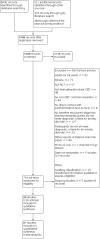
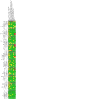

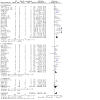
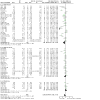
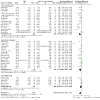

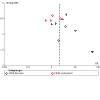
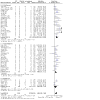
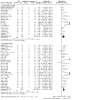
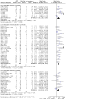
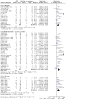
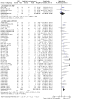

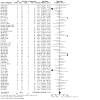

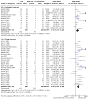

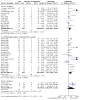
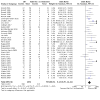

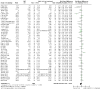
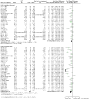


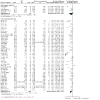

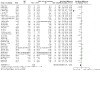


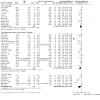
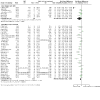
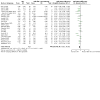


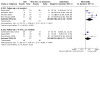
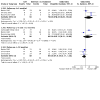
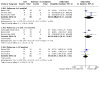
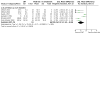
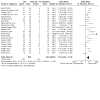
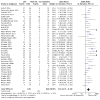
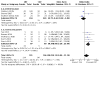

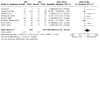
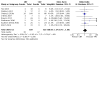
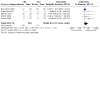
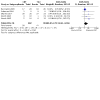
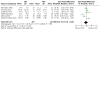
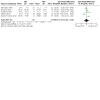

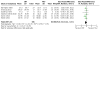

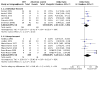
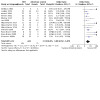
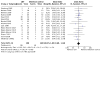
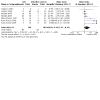
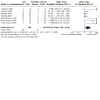
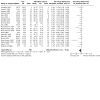
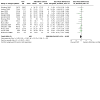
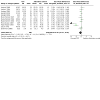
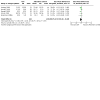
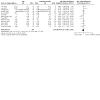

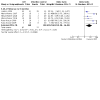
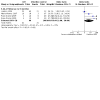
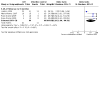
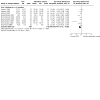
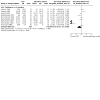


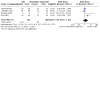

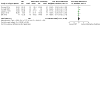

Update of
- doi: 10.1002/14651858.CD013162
References
References to studies included in this review
Afshari 2014 {published data only (unpublished sought but not used)}
Arendt 2016 {published data only (unpublished sought but not used)}
Barrett 1996 {published data only (unpublished sought but not used)}
-
- Barrett PM, Dadds MR, Rapee RM. Family treatment of childhood anxiety: a controlled trial. Journal of Consulting and Clinical Psychology 1996;64(2):333-42. - PubMed
Barrett 1998 {published data only (unpublished sought but not used)}
Barrington 2005 {published data only (unpublished sought but not used)}
-
- Barrington J, Prior M, Richardson M, Allen K. Effectiveness of CBT versus standard treatment for childhood anxiety disorders in a community clinic setting. Behaviour Change 2005;22(1):29-43. [DOI: 10.1375/bech.22.1.29.66786] - DOI
Berge 2017 {published data only}
-
- NCT02083432. Cognitive behavioural treatment of intra-oral Injection-phobia in 10-16 year old children and adolescents. clinicaltrials.gov/show/nct02083432 (first received 11 March 2014).
Cartwright Hatton 2011 {published data only (unpublished sought but not used)}
-
- Cartwright-Hatton S, McNally D, Field AP, Rust S, Laskey B, Dixon B, et al. A new parenting-based group intervention for young anxious children: results of a randomized controlled trial. Journal of the American Academy of Child and Adolescent Psychiatry 2011;50(3):242-51. [10.1016/j.jaac.2010.12.015 ] - PubMed
Chalfant 2007 {published data only (unpublished sought but not used)}
Cheung 2016 {published data only}
-
- Cheung MC. Effectiveness of Attention Bias Modification Treatment for Children With Social Anxiety Problem [Thesis]. Pokfulam, Hong Kong: The University of Hong Kong, 2016. [hub.hku.hk/handle/10722/239961]
Chiu 2013 {published data only (unpublished sought but not used)}
-
- NCT00569829. Modular cognitive behavioral therapy for the treatment of child anxiety disorders in elementary school settings. clinicaltrials.gov/show/nct00569829 (first received 7 December 2007).
Cobham 2017 {published data only}
Cornacchio 2019 {published data only (unpublished sought but not used)}
-
- Cornacchio D, Furr JM, Sanchez AL, Hong N, Feinberg LK, Tenenbaum R, et al. Intensive group behavioral treatment (IGBT) for children with selective mutism: a preliminary randomized clinical trial. Journal of Consulting and Clinical Psychology 2019;87(8):720-33. [DOI: 10.1037/ccp0000422] - DOI - PMC - PubMed
-
- NCT03612102. Evaluating intensive group behavioral treatment for children with selective mutism. clinicaltrials.gov/show/nct03612102 (first received 2 August 2018).
Creswell 2017 {published and unpublished data}
-
- Creswell C, Violato M, Fairbanks H, White E, Parkinson M, Abitabile G, et al. Clinical outcomes and cost-effectiveness of brief guided parent-delivered cognitive behavioural therapy and solution-focused brief therapy for treatment of childhood anxiety disorders: a randomised controlled trial. Lancet Psychiatry 2017;4(7):529-39. [DOI: 10.1016/S2215-0366(17)30149-9] - DOI - PMC - PubMed
-
- ISRCTN07627865. Guided self-help for childhood anxiety problems: a comparison with usual care. www.isrctn.com/ISRCTN07627865 (first received 13 March 2012).
Dadds 1997 {published and unpublished data}
-
- Dadds MR, Holland DE, Laurens KR, Mullins M, Barrett PM, Spence SH. Early intervention and prevention of anxiety disorders in children: results at 2-year follow-up. Journal of Consulting and Clinical Psychology 1999;67(1):145-50. - PubMed
-
- Dadds MR, Spence SH, Holland DE, Barrett PM, Laurens KR. Prevention and early intervention for anxiety disorders: a controlled trial. Journal of Consulting and Clinical Psychology 1997;65(4):627-35. - PubMed
Flannery Schroeder 2000 {published data only (unpublished sought but not used)}
-
- Flannery-Schroeder EC, Kendall PC. Group and individual cognitive-behavioral treatments for youth with anxiety disorders: a randomized clinical trial. Cognitive Therapy and Research 2000;24(3):251-78. [DOI: 10.1023/A:1005500219286] - DOI
Fujii 2013 {published data only (unpublished sought but not used)}
-
- Fujii C, Renno P, McLeod BD, Lin CE, Decker K, Zielinski K, et al. Intensive cognitive behavioral therapy for anxiety disorders in school-aged children with autism: a preliminary comparison with treatment-as-usual. School Mental Health 2013;5(1):25-37. [DOI: 10.1007/s12310-012-9090-0] - DOI
Gallagher 2004 {published data only (unpublished sought but not used)}
Ginsburg 2002 {published data only}
Ginsburg 2012 {published data only (unpublished sought but not used)}
-
- NCT00536094. School-based treatment for anxious children. clinicaltrials.gov/show/nct00536094 (first received 27 September 2007).
Ginsburg 2019a {published data only (unpublished sought but not used)}
-
- Ginsburg GS, Pella JE, Pikulski PJ, Tein JY, Drake KL. School-Based Treatment for Anxiety Research Study (STARS): a randomized controlled effectiveness trial. Journal of Abnormal Child Psychology 2019;48(3):407-17. [10.1007/s10802-019-00596-5 ] - PubMed
-
- NCT01761396. School-based Treatment of Anxiety Research Study (STARS). clinicaltrials.gov/show/nct01761396 (first received 4 January 2013).
Hancock 2018 {published data only (unpublished sought but not used)}
-
- ACTRN12611001280998. Efficacy of acceptance-mindfulness therapy in children with anxiety: a controlled trial. www.who.int/trialsearch/Trial2.aspx?TrialID=ACTRN12611001280998 (first received 13 December 2011).
-
- Hancock KM, Swain J, Hainsworth CJ, Dixon AL, Koo S, Munro K. Acceptance and commitment therapy versus cognitive behavior therapy for children with anxiety: outcomes of a randomized controlled trial. Journal of Clinical Child and Adolescent Psychology 2018;47(2):296-311. [DOI: 10.1080/15374416.2015.1110822] - DOI - PubMed
-
- Swain J, Hancock K, Hainsworth C, Bowman J. Mechanisms of change: exploratory outcomes from a randomised controlled trial of acceptance and commitment therapy for anxious adolescents. Journal of Contextual Behavioral Science 2015;4(1):56-67. [DOI: 10.1016/j.jcbs.2014.09.001] - DOI
Herbert 2009 {published data only (unpublished sought but not used)}
Hirshfeld Becker 2010 {published and unpublished data}
-
- Hirshfeld-Becker DR, Masek B, Henin A, Blakely LR, Pollock-Wurman RA, McQuade J, et al. Cognitive behavioural therapy for 4- to 7-year old children with anxiety disorders: a randomized clinical trial. Journal of Consulting and Clinical Psychology 2010;78(4):498-510. [DOI: 10.1037/a0019055] - DOI - PubMed
-
- NCT00865306. Early intervention for children at risk for anxiety. clinicaltrials.gov/show/nct00865306 (first received 19 March 2009).
Holmes 2014 {published data only (unpublished sought but not used)}
Hudson 2009 {published data only}
-
- Hudson JL, Rapee RM, Deveney C, Schniering CA, Lyneham HJ, Bovopoulos N. Cognitive-behavioral treatment versus an active control for children and adolescents with anxiety disorders: a randomized trial. Journal of the American Academy of Child and Adolescent Psychiatry 2009;48(5):533-44. [DOI: 10.1097/CHI.0b013e31819c2401] - DOI - PubMed
Ingul 2013 {published data only}
Ishikawa 2019 {published data only}
-
- Ishikawa S, Kikuta K, Sakai M, Mitamura T, Motomura N, Hudson JL. A randomized controlled trial of a bidirectional cultural adaptation of cognitive behavior therapy for children and adolescents with anxiety disorders. Behaviour Research and Therapy 2019;120:103432. [DOI: 10.1016/j.brat.2019.103432] - DOI - PubMed
Kendall 1994 {published and unpublished data}
-
- Kendall PC. Treating anxiety disorders in youth: results of a randomized clinical trial. Journal of Consulting and Clinical Psychology 1994;62(1):100-10. - PubMed
Kendall 1997 {published data only (unpublished sought but not used)}
-
- Kendall PC, Flannery-Schroeder E, Panichelli-Mindel SM, Southam-Gerow M, Henin A, Warman M. Therapy for youths with anxiety disorders: a second randomized clinical trial. Journal of Consulting and Clinical Psychology 1997;65(3):366-80. - PubMed
Kendall 2008 {published and unpublished data}
-
- Kendall PC, Hudson JL, Gosch E, Flannery-Schroeder E, Suveg C. Cognitive-behavioral therapy for anxiety disordered youth: a randomized clinical trial evaluating child and family modalities. Journal of Consulting and Clinical Psychology 2008;76(2):282-97. [DOI: 10.1037/0022-006X.76.2.282] - DOI - PubMed
-
- NCT00081406. Individual and family therapy for children with anxiety disorders. clinicaltrials.gov/show/nct00081406 (first received 12 April 2004).
-
- Suveg CH, Hudson JL, Brewer G, Flannery-Schroeder E, Gosch E, Kendall PC. Cognitive-behavioral therapy for anxiety-disordered youth: secondary outcomes from a randomized clinical trial evaluating child and family modalities. Journal of Anxiety Disorders 2009;23(3):341-9. [DOI: 10.1016/j.janxdis.2009.01.003] - DOI - PubMed
Kennedy 2009 {published data only (unpublished sought but not used)}
-
- Kennedy SJ, Rapee RM, Edwards SL. A selective intervention program for inhibited preschool-aged children of parents with an anxiety disorder: effects on current anxiety disorders and temperament. Journal of the American Academy of Child and Adolescent Psychiatry 2009;48(6):602-9. [DOI: 10.1097/CHI.0b013e31819f6fa9] - DOI - PubMed
Khanna 2010 {published data only (unpublished sought but not used)}
Kidd 2018 {published data only}
-
- ACTRN12610001014044. Assessing the efficacy and social validity of a manualised, family-based group Cognitive Behavioural Therapy for adolescents with high-functioning autism and comorbid anxiety disorder. www.who.int/trialsearch/Trial2.aspx?TrialID=ACTRN12610001014044 (first received 19 November 2010).
-
- Kidd TC. Treating Anxiety in Adolescents With Autism Spectrum Disorder Using Group Cognitive Behaviour Therapy: A Randomised Controlled Trial [Doctoral thesis]. Perth, Western Australia: Curtin University, 2018. [hdl.handle.net/20.500.11937/73526]
Last 1998 {published data only}
Lau 2010 {published and unpublished data}
Lau 2017 {published data only (unpublished sought but not used)}
Lebowitz 2019 {published data only (unpublished sought but not used)}
-
- Lebowitz ER, Marin C, Martino A, Shimshoni Y, Silverman WK. Parent-based treatment as efficacious as cognitive-behavioral therapy for childhood anxiety: a randomized noninferiority study of supportive parenting for anxious childhood emotions. Journal of the American Academy of Child and Adolescent Psychiatry 2019 Mar 7 [Epub ahead of print]. [DOI: 10.1016/j.jaac.2019.02.014] - DOI - PMC - PubMed
-
- Lebowitz ER, Marin C, Martino A, Shimshoni Y, Silverman WK. Parent-based treatment as efficacious as cognitive-behavioral therapy for childhood anxiety: a randomized noninferiority study of supportive parenting for anxious childhood emotions. Journal of the American Academy of Child and Adolescent Psychiatry 2020;59(3):362-72. [DOI: 10.1016/j.jaac.2019.02.014] - DOI - PMC - PubMed
-
- NCT02310152. Explanatory clinical trial of a novel parent intervention for childhood anxiety (SPACE). clinicaltrials.gov/show/nct02310152 (first received 5 December 2014).
Leutgeb 2012 {published data only}
Masia Warner 2005 {published data only (unpublished sought but not used)}
Masia Warner 2007 {published data only}
Masia Warner 2011 {published data only (unpublished sought but not used)}
Masia Warner 2016 {published data only (unpublished sought but not used)}
-
- Masia Warner C, Colognori D, Brice C, Herzig K, Mufson L, Lynch C, et al. Can school counselors deliver cognitive-behavioral treatment for social anxiety effectively? A randomized controlled trial. Journal of Child Psychology and Psychiatry and Allied Disciplines 2016;57(11):1229-38. [DOI: 10.1111/jcpp.12550] - DOI - PubMed
-
- NCT01320800. CBT for social anxiety disorder delivered by school counselors. clinicaltrials.gov/show/nct01320800 (first received 22 March 2011).
McConachie 2014 {published data only}
-
- ISRCTN11219568. Effective therapy for anxiety in young people with autism spectrum disorder. www.isrctn.com/ISRCTN11219568 (first received 12 May 2010).
McNally Keehn 2013 {published data only (unpublished sought but not used)}
Melfsen 2011 {published and unpublished data}
-
- Melfsen S, Kuhnemund M, Schwieger J, Warnke A, Stadler C, Poustka F, et al. Cognitive behavioral therapy of socially phobic children focusing on cognition: a randomised wait-list control study. Child and Adolescent Psychiatry and Mental Health 2011;5:ArtID2. [DOI: 10.1186/1753-2000-5-5] - DOI - PMC - PubMed
Muris 2002 {published data only}
-
- Muris P, Meesters C, Melick M. Treatment of childhood anxiety disorders: a preliminary comparison between cognitive-behavioral group therapy and a psychological placebo intervention. Journal of Behavior Therapy and Experimental Psychiatry 2002;33(3-4):143-58. - PubMed
Murphy 2017 {published data only (unpublished sought but not used)}
-
- Murphy SM, Chowdhury U, White SW, Reynolds L, Donald L, Gahan H, et al. Cognitive behaviour therapy versus a counselling intervention for anxiety in young people with high-functioning autism spectrum disorders: a pilot randomised controlled trial. Journal of Autism and Developmental Disorders 2017;47(11):3446-57. [DOI: 10.1007/s10803-017-3252-8] - DOI - PMC - PubMed
O'Brien 2007 {published data only (unpublished sought but not used)}
-
- O'Brien F, Olden N, Migone M, Dooley B, Atkins L, Ganter K, et al. Group cognitive behavioural therapy for children with anxiety disorder - an evaluation of the 'Friends for Youth' programme. Irish Journal of Psychological Medicine 2007;24(1):5-12. - PubMed
Olivares 2005 {published and unpublished data}
-
- Olivares J, Rosa-Alcazar AI, Piqueras JA. Early detection and treatment of adolescents with generalized social phobia. Psicothema 2005;17(1):1-8.
Olivares 2014 {published data only}
-
- Olivares J, Olivares-Olivares PJ, Rosa-Alcazar AI, Montesinos L, Macia D. The contribution of the therapist's competence in the treatment of adolescents with generalized social phobia. Psicothema 2014;26(4):483-9. - PubMed
Olivares 2019 {published data only}
Ollendick 2009 {published data only}
Ost 2001 {published and unpublished data}
Perrin 2019 {published data only}
-
- ISRCTN50951795. Cognitive therapy for generalised anxiety in youth. www.isrctn.com/ISRCTN50951795 (first received 30 June 2010).
-
- Perrin S, Bevan D, Payne S, Bolton D. GAD-specific cognitive behavioral treatment for children and adolescents: a pilot randomized controlled trial. Cognitive Therapy and Research 2019;43(6):1051-64. [DOI: 10.1007/s10608-019-10020-3] - DOI
Pincus 2010 {published data only (unpublished sought but not used)}
-
- NCT00705380. Effectiveness of cognitive behavioral therapy with panic control treatment for adolescents with panic disorder. clinicaltrials.gov/show/nct00705380 (first received 25 June 2008).
Rapee 2005 {published and unpublished data}
Rapee 2006 {published and unpublished data}
Reaven 2012 {published data only}
Reigada 2015 {published and unpublished data}
-
- Reigada LC, Polokowski AR, Walder DJ, Szigethy EM, Benkov KJ, Bruzzese JM, et al. Treatment for comorbid pediatric gastrointestinal and anxiety disorders: a pilot study of a flexible health sensitive cognitive-behavioral therapy program. Clinical Practice in Pediatric Psychology 2015;3(4):314-26. [DOI: 10.1037/cpp0000116] - DOI
Rosa Alcazar 2009 {published and unpublished data}
-
- Rosa-Alcazar AI, Olivares-Olivares PJ, Olivares J. The role of non-specific effects in the psychological treatment of adolescents with social phobia. Anuario de Psicologia 2009;40(1):43-61.
Salari 2018 {published and unpublished data}
-
- NCT01513915. A parent-only group cognitive behavioral intervention for children with anxiety disorders: a control group study. clinicaltrials.gov/show/nct01513915 (first received 20 January 2012).
Salum 2018 {published data only}
-
- NCT01687764. Combination of active or placebo Attentional Bias Modification Treatment (ABMT) to either Cognitive Behavioral Group Therapy (CBGT) or Psychoeducational Control Intervention (PCI) for anxiety disorders in children: a randomized clinical trial. https://www.clinicaltrials.gov/ct2/show/NCT01687764 19 September 2012.
-
- Salum GA, Petersen CS, Jarros RB, Toazza R, DeSousa D, Borba LN, et al. Group cognitive behavioral therapy and attention bias modification for childhood anxiety disorders: a factorial randomized trial of efficacy. Journal of Child and Adolescent Psychopharmacology 2018;28(9):620-30. [DOI: 10.1089/cap.2018.0022] - DOI - PMC - PubMed
Sanchez Garcia 2009 {published and unpublished data}
-
- Sanchez-Garcia R, Olivares J. Effectiveness of a program for early detection/intervention in children/adolescents with generalized social phobia. Anales de Psicologia 2009;25(2):241-9.
Santucci 2013 {published data only (unpublished sought but not used)}
Schneider 2011 {published data only (unpublished sought but not used)}
-
- Schneider S, Blatter-Meunier J, Herren C, Adornetto C, In-Albon T, Lavallee K. Disorder-specific cognitive-behavioral therapy for separation anxiety disorder in young children: a randomized waiting-list-controlled trial. Psychotherapy and Psychosomatics 2011;80(4):206-15. [DOI: 10.1159/000323444] - DOI - PubMed
Sciberras 2018 {published data only (unpublished sought but not used)}
-
- ISRCTN33930984. Does the identification and treatment of comorbid anxiety disorders in children with attention deficit hyperactivity disorder (ADHD) improve outcomes? www.isrctn.com/ISRCTN33930984 (first received 2 October 2013).
Shahnavaz 2016 {published data only}
-
- NCT01798355. Children and adolescents with dental anxiety - randomized controlled study of cognitive behavioral therapy. clinicaltrials.gov/show/nct01798355 (first received 25 February 2013).
Sharma 2017 {published and unpublished data}
Shortt 2001 {published data only}
Silk 2018 {published and unpublished data}
-
- NCT00774150. Transdisciplinary studies of CBT for anxiety in youth: child anxiety treatment study. clinicaltrials.gov/show/nct00774150 (first received 17 October 2008).
-
- Silk JS, Tan PZ, Ladouceur CD, Meller S, Siegle GJ, McMakin DL, et al. A randomized clinical trial comparing individual cognitive behavioral therapy and child-centered therapy for child anxiety disorders. Journal of Clinical Child and Adolescent Psychology 2018;47(4):542-54. [DOI: 10.1080/15374416.2016.1138408] - DOI - PMC - PubMed
Silverman 1999a {published data only (unpublished sought but not used)}
-
- Silverman WK, Kurtines WM, Ginsburg GS, Weems CF, Rabian B, Serafini LT. Contingency management, self-control, and education support in the treatment of childhood phobic disorders: a randomized clinical trial. Journal of Consulting and Clinical Psychology 1999;67(5):675-87. - PubMed
Silverman 1999b {published data only (unpublished sought but not used)}
-
- Silverman WK, Kurtines WM, Ginsburg GS, Weems CF, Lumpkin PW, Carmichael DH. Treating anxiety disorders in children with group cognitive-behavioral therapy: a randomized clinical trial. Journal of Consulting and Clinical Psychology 1999;67(6):995-1003. - PubMed
Simon 2011 {published and unpublished data}
-
- NTR1143. Prevention of childhood anxiety disorders via the parent or via the child? www.who.int/trialsearch/Trial2.aspx?TrialID=NTR1143 (first received 27 November 2007).
Smith 2014 {published data only (unpublished sought but not used)}
-
- Smith AM, Flannery-Schroeder EC, Gorman KS, Cook N. Parent cognitive-behavioral intervention for the treatment of childhood anxiety disorders: a pilot study. Behaviour Research and Therapy 2014;61:156-61. - PubMed
-
- Smith AM. Cognitive-behavioral treatment of childhood anxiety: examining a parent consultation model. Dissertation Abstracts International: Section B: The Sciences and Engineering 2014;74:8-B(E).
Southam Gerow 2010 {published data only (unpublished sought but not used)}
-
- Southam-Gerow MA, Weisz JR, Chu BC, McLeod BD, Gordis EB, Connor-Smith JK. Does cognitive behavioral therapy for youth anxiety outperform usual care in community clinics? An initial effectiveness test. Journal of the American Academy of Child and Adolescent Psychiatry 2010;49(10):1043-52. [DOI: 10.1016/j.jaac.2010.06.009] - DOI - PMC - PubMed
Spence 2000 {published and unpublished data}
-
- Spence SH, Donovan C, Brechman-Toussaint M. The treatment of childhood social phobia: the effectiveness of a social skills training-based, cognitive-behavioural intervention, with and without parental involvement. Journal of Child Psychology and Psychiatry and Allied Disciplines 2000;41(6):713-26. - PubMed
Spence 2006 {published data only}
Spence 2011 {published data only}
Storch 2013 {published data only}
-
- NCT01178385. Cognitive-behavioral treatment for anxiety disorders in children with autism spectrum disorders. clinicaltrials.gov/show/nct01178385 (first received 10 August 2010).
-
- Storch EA, Arnold EB, Lewin AB, Nadeau JM, Jones AM, De Nadai AS, et al. The effect of cognitive-behavioral therapy versus treatment as usual for anxiety in children with autism spectrum disorders: a randomized, controlled trial. Journal of the American Academy of Child and Adolescent Psychiatry 2013;52(2):132-42.e2. [DOI: 10.1016/j.jaac.2012.11.007] - DOI - PubMed
Storch 2015 {published data only}
-
- NCT01563003. Cognitive behavioral therapy for anxiety disorders in adolescents with autism. clinicaltrials.gov/show/nct01563003 (first received 26 March 2012).
-
- Storch EA, Lewin AB, Collier AB, Arnold E, De Nadai AS, Dane BF, et al. A randomized controlled trial of cognitive-behavioral therapy versus treatment as usual for adolescents with autism spectrum disorders and comorbid anxiety. Depression and Anxiety 2015;32(3):174-81. [DOI: 10.1002/da.22332] - DOI - PMC - PubMed
Thirlwall 2013 {published data only}
Villabo 2018 {published data only}
-
- NCT00735995. Effectiveness of cognitive behavioral therapy (CBT) for child anxiety disorders in community clinics in Norway. clinicaltrials.gov/show/nct00735995 (first received 15 August 2008).
Walkup 2008 {published data only (unpublished sought but not used)}
-
- Albano AM, Comer JS, Compton SN, Piacentini J, Kendall PC, Birmaher B, et al. Secondary outcomes from the Child/Adolescent Anxiety Multimodal Study: implications for clinical practice. Evidence-Based Practice in Child and Adolescent Mental Health 2018;3(1):30-41. [DOI: 10.1080/23794925.2017.1399485] - DOI - PMC - PubMed
-
- Ginsburg GS, Becker-Haimes EM, Keeton C, Kendall PC, Lyengar S, Sakolsky D, et al. Results from the Child/Adolescent Anxiety Multimodal Extended Long-Term Study (CAMELS): primary anxiety outcomes. Journal of the American Academy of Child and Adolescent Psychiatry 2018;57(7):471-80. [DOI: 10.1016/j.jaac.2018.03.017] - DOI - PubMed
Waters 2009 {published data only}
Wergeland 2014 {published and unpublished data}
-
- NCT00586586. Effectiveness study of CBT for anxiety in children. clinicaltrials.gov/show/nct00586586 (first received 4 January 2008).
White 2013 {published data only}
-
- NCT00926471. Social skills and anxiety reduction treatment for children and adolescents with autism spectrum disorders. clinicaltrials.gov/show/nct00926471 (first received 23 June 2009).
-
- White SW, Ollendick T, Albano AM, Oswald D, Johnson C, Southam-Gerow MA, et al. Randomized controlled trial: Multimodal Anxiety and Social Skill Intervention for adolescents with autism spectrum disorder. Journal of Autism and Developmental Disorders 2013;43(2):382-94. [DOI: 10.1007/s10803-012-1577-x] - DOI - PMC - PubMed
Wood 2009 {published data only (unpublished sought but not used)}
-
- Wood JJ, Drahota A, Sze K, Har K, Chiu A, Langer DA. Cognitive behavioral therapy for anxiety in children with autism spectrum disorders: a randomized, controlled trial. Journal of Child Psychology and Psychiatry and Allied Disciplines 2009;50(3):224-34. [DOI: 10.1111/j.1469-7610.2008.01948.x] - DOI - PMC - PubMed
Wood 2015 {published data only (unpublished sought but not used)}
-
- NCT01177969. CBT for anxiety disorders in autism: adapting treatment for adolescents. clinicaltrials.gov/ct2/show/nct01177969 (first received 9 August 2010).
-
- Wood JJ, Ehrenreich-May J, Alessandri M, Fujii C, Renno P, Laugeson E, et al. Cognitive behavioral therapy for early adolescents with autism spectrum disorders and clinical anxiety: a randomized, controlled trial. Behavior Therapy 2015;46(1):7-19. [DOI: 10.1016/j.beth.2014.01.002] - DOI - PMC - PubMed
References to studies excluded from this review
Asbrand {unpublished data only}
-
- Asbrand J. Exposure-based cognitive behavior therapy for children and adolescents with social anxiety disorder: a randomized controlled group treatment trial. Manuscript provided by author (on 21 May 2019).
Asbrand 2019 {published data only}
-
- Asbrand J, Heinrichs N, Nitschke K, Wolf OT, Schmidtendorf S, Tuschen-Caffier B. Repeated stress leads to enhanced cortisol stress response in child social anxiety disorder but this effect can be prevented with CBT. Psychoneuroendocrinology 2019;109:104352. [DOI: 10.1016/j.psyneuen.2019.06.003] - DOI - PubMed
-
- Asbrand J, Heinrichs N, Schmidtendorf S, Nitschke K, Tuschen-Caffier B. Experience versus report: where are changes seen after exposure-based cognitive-behavioral therapy? A randomized controlled group treatment of childhood social anxiety disorder. Child Psychiatry and Human Development 2020;51(3):427-41. [DOI: 10.1007/s10578-019-00954-w] - DOI - PMC - PubMed
-
- Asbrand J, Schmitz J, Kramer M, Nitschke K, Heinrichs N, Tuschen-Caffier B. Effects of group-based CBT on post-event processing in children with social anxiety disorder following an experimental social stressor. Journal of Abnormal Child Psychology 2019;47(12):1945-56. [DOI: 10.1007/s10802-019-00558-x] - DOI - PubMed
Baer 2005 {published data only}
Beidel 2000 {published data only}
-
- Beidel DC, Turner SM, Morris TL. Behavioral treatment of childhood social phobia. Journal of Consulting and Clinical Psychology 2000;68(6):1072-80. - PubMed
-
- Beidel DC, Turner SM, Young B, Paulson A. Social effectiveness therapy for children: three-year follow-up. Journal of Consulting and Clinical Psychology 2005;73(4):721-5. - PubMed
-
- Beidel DC, Turner SM, Young BJ. Social effectiveness therapy for children: five years later. Behavior Therapy 2006;37(4):416-25. - PubMed
Beidel 2007 {published data only}
-
- NCT00043537. Treatment of childhood social phobia. clinicaltrials.gov/ct2/show/NCT00043537 (first received 12 August 2002).
Bergman 2013 {published data only}
-
- NCT00458198. Integrated behavioral therapy for treating children with selective mutism. clinicaltrials.gov/ct2/show/NCT00458198 (first received 9 April 2007).
Bernstein 2005 {published data only (unpublished sought but not used)}
Bodden 2008a {published data only}
-
- Bodden DH, Bogels SM, Nauta MH, De Haan E, Ringrose J, Appelboom C, et al. Child versus family cognitive-behavioral therapy in clinically anxious youth: an efficacy and partial effectiveness study. Journal of the American Academy of Child and Adolescent Psychiatry 2008;47(12):1384-94. [DOI: 10.1097/CHI.0b013e318189148e] - DOI - PubMed
Clementi 2019 {published data only}
-
- Clementi MA. Efficacy of an integrated sleep and anxiety intervention for anxious children: a pilot randomized controlled trial. Dissertation Abstracts International: Section B: The Sciences and Engineering 2019;80:7-B(E). - PubMed
Cobham 2012 {published data only}
-
- Cobham V. Do anxiety-disordered children need to come into the clinic for efficacious treatment? Journal of Consulting and Clinical Psychology 2012;80(3):465-76. - PubMed
Cotton 2019 {published data only}
-
- Cotton S, Kraemer KM, Sears RW, Strawn JR, Wasson RS, McCune N, et al. Mindfulness-based cognitive therapy for children and adolescents with anxiety disorders at-risk for bipolar disorder: a psychoeducation waitlist controlled pilot trial. Early Intervention in Psychiatry 2019;14(2):211-9. - PMC - PubMed
Ebrahiminejad 2016 {published data only}
-
- Ebrahiminejad S, Poursharifi H, Bakhshiour Roodsari A, Zeinodini Z, Noorbakhsh S. The effectiveness of mindfulness-based cognitive therapy on Iranian female adolescents suffering from social anxiety. Iranian Red Crescent Medical Journal 2016;18(11):e25116. [DOI: 10.5812/ircmj.25116] - DOI - PMC - PubMed
Flatt 2010 {published data only}
-
- Flatt N, King N. Brief psycho-social interventions in the treatment of specific childhood phobias: a controlled trial and a 1-year follow-up. Behaviour Change 2010;27(3):130-53.
Gil Bernal 2009 {published data only}
-
- Gil-Bernal F, Hernandez-Guzman L. Cognitive-behavioural treatment in Mexican children with social phobia. Anuario de Psicologia 2009;40(1):89-104.
Ginsburg 2019b {published data only (unpublished sought but not used)}
Hayward 2000 {published data only}
-
- Hayward C, Varady S, Albano AM, Thienemann M, Henderson L, Schatzberg AF. Cognitive-behavioral group therapy for social phobia in female adolescents: results of a pilot study. Journal of the American Academy of Child and Adolescent Psychiatry 2000;39(6):721-6. [DOI: 10.1097/00004583-200006000-00010] - DOI - PubMed
Jansen 2012 {published data only}
-
- Jansen M, Doorn MM, Lichtwarck-Aschoff A, Kuijpers RC, Theunissen H, Korte M, et al. Effectiveness of a cognitive-behavioral therapy (CBT) manualized program for clinically anxious children: study protocol of a randomized controlled trial. BMC Psychiatry 2012;12(1):16. [DOI: 10.1186/1471-244X-12-16] - DOI - PMC - PubMed
Kerns 2016 {published data only}
-
- NCT02028247. Psychotherapy for Anxiety in Children With Autism Spectrum Disorder (TAASD). clinicaltrials.gov/show/NCT02111395 (first received 7 January 2014).
Kujawa 2019 {published data only}
Lyneham 2006 {published data only}
Mendlowitz 1999 {published data only}
-
- Mendlowitz SL, Manassis K, Bradley S, Scapillato D, Miezitis S, Shaw BF. Cognitive-behavioral group treatments in childhood anxiety disorders: the role of parental involvement. Journal of the American Academy of Child and Adolescent Psychiatry 1999;38(10):1223-9. - PubMed
Nauta 2003 {published data only}
-
- Nauta MH, Scholing A, Emmelkamp PM, Minderaa RB. Cognitive-behavioral therapy for children with anxiety disorders in a clinical setting: no additional effect of a cognitive parent training. Journal of the American Academy of Child and Adolescent Psychiatry 2003;42(11):1270-8. [DOI: 10.1097/01.chi.0000085752.71002.93] - DOI - PubMed
NCT00576719 {published data only}
-
- Gallo KP, Cooper-Vince CE, Hardway CL, Pincus DB, Comer JS. Trajectories of change across outcomes in intensive treatment for adolescent panic disorder and agoraphobia. Journal of Clinical Child and Adolescent Psychology 2014;43(5):742-50. - PubMed
-
- NCT00576719. Effectiveness of intensive cognitive behavioral therapy in treating adolescent panic disorder and agoraphobia. clinicaltrials.gov/show/nct00576719 (first received 19 December 2007).
Oerbeck 2014 {published data only}
-
- Oerbeck B, Stein MB, Wentzel-Larsen T, Langsrud O, Kristensen H. A randomized controlled trial of a home and school-based intervention for selective mutism - defocused communication and behavioural techniques. Child and Adolescent Mental Health 2014;19(3):192-8. [DOI: 10.1111/camh.12045] - DOI - PubMed
Ollendick 2018 {published data only}
Ost 2015 {published data only}
Ozyurt 2018 {published data only}
-
- Ozyurt G, Gencer O, Ozturk Y, Ozbek A. Is Triple P effective in childhood anxiety disorder? A randomized controlled study. Psychiatry and Clinical Psychopharmacology 2019;29(4):570-8. [DOI: 10.1080/24750573.2018.1483790] - DOI
Pereira 2014 {published data only (unpublished sought but not used)}
-
- Pereira AI, Marques T, Russo V, Barros L, Barrett P. Effectiveness of the friends for life program in Portuguese schools: study with a sample of highly anxious children. Psychology in the Schools 2014;51(6):647-57. [DOI: 10.1002/pits.21767] - DOI
Rudy 2017 {published data only}
-
- NCT02051192. A brief behavioral treatment for anxiety in young children. clinicaltrials.gov/ct2/show/NCT02051192 (first received 31 January 2014).
-
- Rudy BM, Zavrou S, Johnco C, Storch EA, Lewin AB. Parent-led exposure therapy: a pilot study of a brief behavioral treatment for anxiety in young children. Journal of Child and Family Studies 2017;26(9):2475-84. [DOI: 10.1007/s10826-017-0772-y] - DOI
Salzer 2018 {published data only (unpublished sought but not used)}
-
- ISRCTN22752528. Cognitive therapy (CT-A) versus short-term psychodynamic psychotherapy (STPP-A) for social phobia (SP) in adolescents. www.isrctn.com/ISRCTN22752528 (first received 17 February 2011).
-
- Salzer S, Stefini A, Kronmuller KT, Leibing E, Leichsenring F, Henningsen P, et al. Cognitive-behavioral and psychodynamic therapy in adolescents with social anxiety disorder: a multicenter randomized controlled trial. Psychotherapy and Psychosomatics 2018;87(4):223-33. [DOI: 10.1159/000488990] - DOI - PubMed
Sevi Tok 2016 {published data only}
-
- Sevi Tok ES, Arkar H, Bildik T. The effectiveness of cognitive behavioral therapy, medication, or combined treatment for childhood anxiety disorders. Turk Psikiyatri Dergisi [Turkish Journal of Psychiatry] 2016;27(2):1-8. - PubMed
Storch 2019 {published data only}
-
- NCT01919970. Exposure-focused family-based CBT for youth with ASD and comorbid anxiety. clinicaltrials.gov/ct2/show/NCT01919970 (first received 9 August 2013).
-
- Storch EA, Schneider SC, De Nadai AS, Selles RR, McBride NM, Grebe SC, et al. A pilot study of family-based exposure-focused Treatment for Youth with Autism Spectrum Disorder and Anxiety. Child Psychiatry & Human Development 2019 Sep 6 [Epub ahead of print]. [DOI: 10.1007/s10578-019-00923-3] - DOI - PubMed
Sung 2011 {published data only}
-
- NCT01031511. Effect of cognitive behavioural therapy (CBT) for children with autistic spectrum disorders. clinicaltrials.gov/show/nct01031511 (first received 14 December 2009).
Weisz 2012 {published data only}
-
- Chorpita BF, Weisz JR, Daleiden EL, Schoenwald SK, Palinkas LA, Miranda J, et al. Long-term outcomes for the Child STEPs randomized effectiveness trial: a comparison of modular and standard treatment designs with usual care. Journal of Consulting and Clinical Psychology 2013;81(6):999-1009. [DOI: 10.1037/a0034200] - DOI - PubMed
-
- NCT01178554. The Clinic Treatment Project (CTP). clinicaltrials.gov/ct2/show/nct01178554 (first received 10 August 2010).
-
- Weisz JR, Chorpita BF, Palinkas LA, Schoenwald SK, Miranda J, Bearman SK, et al. Testing standard and modular designs for psychotherapy treating depression, anxiety, and conduct problems in youth: a randomized effectiveness trial. Archives of General Psychiatry 2012;69(3):274-82. [DOI: 10.1001/archgenpsychiatry.2011.147] - DOI - PubMed
References to studies awaiting assessment
ACTRN12613000217707 {unpublished data only}
-
- ACTRN12613000217707. A multi-centre randomised controlled trial of cognitive behavioural therapy for managing anxiety in adolescents with acquired brain injury. www.who.int/trialsearch/Trial2.aspx?TrialID=ACTRN12613000217707 (first received 25 February 2013).
ACTRN12615000730505 {unpublished data only}
-
- ACTRN12615000730505. Cognitive behaviour therapy for comorbid anxiety and sleep disorders: a randomized controlled trial. www.who.int/trialsearch/Trial2.aspx?TrialID=ACTRN12615000730505 (first received 15 July 2015).
ACTRN12619000619145 {unpublished data only}
-
- ACTRN12619000619145. SCAN Study - Self Compassion & Cognitive Behavioural Therapy (CBT): Early family intervention for children with Type 1 diabetes experiencing anxiety. www.who.int/trialsearch/Trial2.aspx?TrialID=ACTRN12619000619145 (first received 26 April 2019).
DRKS00012823 {unpublished data only}
-
- DRKS00012823. Short-term, long-term and cost-effectiveness of treating depression and anxiety disorders in children and adolescents a randomized controlled trial. www.who.int/trialsearch/Trial2.aspx?TrialID=DRKS00012823 (first received 27 September 2017).
IRCT20181006041250N {unpublished data only}
-
- IRCT20181006041250N1. Effectiveness of coping cat-based cognitive-behavioral therapy (CBT) in group format on treatment of anxiety in children. www.who.int/trialsearch/Trial2.aspx?TrialID=IRCT20181006041250N1 (first received 18 October 2018).
ISRCTN59518816 {unpublished data only}
-
- ISRCTN59518816. Does the treatment of anxiety in children with ADHD improve outcomes? www.who.int/trialsearch/Trial2.aspx?TrialID=ISRCTN59518816 (first received 29 September 2015).
JPRN‐UMIN000008724 {unpublished data only}
-
- JPRN-UMIN000008724. Japanese Anxiety Children/Adolescents CBT study. www.who.int/trialsearch/Trial2.aspx?TrialID=JPRN-UMIN000008724 (first received 27 August 2012).
JPRN‐UMIN000032275 {unpublished data only}
-
- JPRN-UMIN000032275. Transdiagnostic intervention for anxiety and depression in children and adolescents. www.who.int/trialsearch/Trial2.aspx?TrialID=JPRN-UMIN000032275 (first received 19 April 2018).
JPRN‐UMIN000033218 {unpublished data only}
-
- JPRN-UMIN000033218. The efficacy of group CBT for children with autism spectrum disorder to reduce anxiety symptoms. www.who.int/trialsearch/Trial2.aspx?TrialID=JPRN-UMIN000033218 (first received 1 July 2018).
NCT02810171 {unpublished data only}
-
- NCT02810171. Dimensional brain behavior predictors of CBT outcomes in pediatric anxiety. clinicaltrials.gov/show/nct02810171 (first received 20 June 2016).
NCT02977962 {unpublished data only}
-
- NCT02977962. Treatment of anxiety in late adolescents with autism. clinicaltrials.gov/show/nct02977962 (first received 28 November 2016).
NCT03412227 {unpublished data only}
-
- NCT03412227. Transdiagnostic individual behavioral activation and exposure therapy. clinicaltrials.gov/show/nct03412227 (first received 15 October 2017).
NCT03899948 {unpublished data only}
-
- NCT03899948. Teacher anxiety program for elementary students. clinicaltrials.gov/show/NCT03899948 (first received 28 March 2019).
References to ongoing studies
ACTRN12616001552471 {published data only}
-
- ACTRN12616001552471. Effectiveness of school group-based acceptance and commitment therapy for children with anxiety: a randomised controlled trial. www.who.int/trialsearch/Trial2.aspx?TrialID=ACTRN12616001552471 (first received 10 November 2016).
NCT02725619 {published data only}
-
- NCT02725619. CBT for anxiety in children with autism. clinicaltrials.gov/show/nct02725619 (first received 1 April 2016).
NCT02908321 {published data only}
-
- Kilburn TR, Sorensen MJ, Thastum M, Rapee RM, Rask CU, Arendt KB, et al. Rationale and design for cognitive behavioral therapy for anxiety disorders in children with autism spectrum disorder: a study protocol of a randomized controlled trial. Trials 2018;19:210. [DOI: 10.1186/s13063-018-2591-x] - DOI - PMC - PubMed
-
- NCT02908321. CBT for anxiety disorder in children with co-morbid ASD. clinicaltrials.gov/show/nct02908321 (first received 20 September 2016).
NCT03279471 {published data only}
-
- NCT03279471. Specifying and treating anxiety in autism research. clinicaltrials.gov/show/nct03279471 (first received 12 September 2017).
NCT03585010 {published data only}
-
- NCT03585010. Brain response associated with parent-based treatment for childhood anxiety disorders. clinicaltrials.gov/ct2/show/NCT03585010 (first received 12 July 2018).
Additional references
Ale 2015
-
- Ale CM, McCarthy DM, Rothschild LM, Whiteside SP. Components of cognitive behavioral therapy related to outcome in childhood anxiety disorders. Clinical Child and Family Psychology Review 2015;18(3):240-51. - PubMed
Angold 1995
-
- Angold A, Costello EJ, Messer SC, Pickles A, Winder F, Silver D. The development of a short questionnaire for use in epidemiological studies of depression in children and adolescents. International Journal of Methods in Psychiatric Research 1995;5:237-49.
APA 1980
-
- American Psychiatric Association. Diagnostic and Statistical Manual of Mental Disorders (DSM-III). 3rd edition. Washington, DC: American Psychiatric Association, 1980.
APA 1987
-
- American Psychiatric Association. Diagnostic and Statistical Manual of Mental Disorders (DSM-III-R). 3rd revised edition. Washington, DC: American Psychiatric Association, 1987.
APA 1994
-
- American Psychiatric Association. Diagnostic and Statistical Manual of Mental Disorders (DSM-IV). 4th edition. Washington, DC: American Psychiatric Association, 1994.
APA 2000
-
- American Psychiatric Association. Diagnostic and Statistical Manual of Mental Disorders (DSM-IV-TR). 4th text revision edition. Washington, DC: American Psychiatric Association, 2000.
APA 2013
-
- American Psychiatric Association. Diagnostic and Statistical Manual of Mental Disorders. 5th edition. Washington, DC: American Psychiatric Association, 2013.
Barlow 2010
Beck 1996
-
- Beck A, Steer RA, Brown GK. Beck Depression Inventory Section Edition Manual. San Antonio: The Psychological Corporation, 1996.
Beesdo 2009
Beidel 1995
-
- Beidel DC, Turner SM, Morris TL. A new instrument to assess childhood social anxiety and phobia: the Social Phobia and Anxiety Inventory for Children. Psychological Assessment 1995;10:73-9.
Bennett 2016
-
- Bennett K, Manassis K, Duda S, Bagnell A, Bernstein GA, Garland EJ, et al. Treating child and adolescent anxiety effectively: overview of systematic reviews. Clinical Psychology Review 2016;50:80-94. - PubMed
Birmaher 1999
-
- Birmaher B. Screen for Child Anxiety Related Emotional Disorders (SCARED). Pittsburgh, PA: Western Psychiatric Institute and Clinic, 1999.
Bodden 2008b
Bower 2005
-
- Bower P, Gilbody S. Stepped care in psychological therapies: access, effectiveness and efficiency – narrative literature review. British Journal of Psychiatry 2005;186:11-7. - PubMed
Breinholst 2012
-
- Breinholst S, Esbjorn BH, Reinholdt-Dunne ML, Stallard P. CBT for the treatment of child anxiety disorders: a review of why parental involvement has not enhanced outcomes. Journal of Anxiety Disorders 2012;26(3):416–24. - PubMed
Brown 2007
-
- Brown AM, Deacon BJ, Abramowitz JS, Dammann J, Whiteside SP. Parents' perceptions of pharmacological and cognitive-behavioral treatments for childhood anxiety disorders. Behaviour Research and Therapy 2007;45(4):819-28. - PubMed
Cartwright‐Hatton 2004
-
- Cartwright-Hatton S, Roberts C, Chitsabesan P, Fothergill C, Harrington R. Systematic review of the efficacy of cognitive-behaviour therapies for childhood and adolescent anxiety disorders. British Journal of Clinical Psychology 2004;43:421-36. - PubMed
Cartwright‐Hatton 2011
-
- Cartwright-Hatton S, McNally D, Field AP, Rust S, Laskey B, Dixon C, et al. A new parenting-based group intervention for young anxious children: results of a randomized controlled trial. Journal of the American Academy of Child and Adolescent Psychiatry 2011;50(3):242-51.e6. - PubMed
Chatterton 2019
-
- Chatterton ML, Rapee RM, Catchpool M, Lyneham HJ, Wuthrich V, Hudson JL, et al. Economic evaluation of stepped care for the management of childhood anxiety disorders: results from a randomised trial. Australian and New Zealand Journal of Psychiatry 2019;53:673-82. - PubMed
Chorpita 2000
-
- Chorpita BF, Yim L, Moffitt C, Umemoto LA, Francis SE. Assessment of symptoms of DSM-IV anxiety and depression in children: a revised child anxiety and depression scale. Behaviour Research and Therapy 2000;38(8):835-55. - PubMed
Compton 2004
-
- Compton SN, March JS, Brent D, Albano AM, Weering R, Curry J. Cognitive-behavioral psychotherapy for anxiety and depressive disorders in children and adolescents: an evidence-based medicine review. Journal of the American Academy Child and Adolescent Psychiatry 2004;43:930–59. - PubMed
Copeland 2014
Covidence [Computer program]
-
- Veritas Health Innovation Covidence. Version Accessed 3 December 2018. Melbourne, Australia: Veritas Health Innovation. Available at covidence.org.
Creswell 2020a
-
- Creswell C, Nauta M, Hudson J, March S, Reardon T, Arendt K, et al. Recommendations for reporting on treatment trials for child and adolescent anxiety disorders: an international consensus statement. Journal of Child Psychology and Psychiatry 2020 Jul 19 [Epub ahead of print]. [DOI: 10.1111/jcpp.13283] - DOI - PubMed
Creswell 2020b
Crowe 2017
-
- Crowe K, McKay D. Efficacy of cognitive-behavioral therapy for childhood anxiety and depression. Journal of Anxiety Disorders 2017;49:76-87. - PubMed
Deeks 2017
-
- Deeks JJ, Higgins JP, Altman DG, editor(s) on behalf of the Cochrane Statistical Methods Group. Chapter 9: Analysing data and undertaking meta-analyses. In: Higgins JPT, Churchill R, Chandler J, Cumpston MS, editor(s). Cochrane Handbook for Systematic Reviews of Interventions version 5.2.0 (updated June 2017). Cochrane, 2017. Available from www.training.cochrane.org/handbook.
Duggan 2014
Essau 2003
Essau 2004
-
- Essau CA, Conradt J, Ederer EM. Anxiety prevention among school children. Versicherungsmedizin 2004;56:123-30. - PubMed
Essau 2014
Evans 2017
Fineberg 2013
Galla 2012
-
- Galla BM, Wood JJ, Chiu AW, Langer DA, Jacobs J, Ifekwunigwe M, et al. One year follow-up to modular cognitive behavioral therapy for the treatment of pediatric anxiety disorders in an elementary school setting. Child Psychiatry and Human Development 2012;43(2):219-26. - PubMed
Gillies 2016
Ginsburg 2018
-
- Ginsburg GS, Becker-Haimes EM, Keeton C, Kendall PC, Lyengar S, Sakolsky D, et al. Results from the Child/Adolescent Anxiety Multimodal Extended Long-Term Study (CAMELS): primary anxiety outcomes. Journal of the American Academy of Child and Adolescent Psychiatry 2018;57(7):471-80. [DOI: 10.1016/j.jaac.2018.03.017] - DOI - PubMed
GRADEpro GDT [Computer program]
-
- McMaster University (developed by Evidence Prime) GRADEpro GDT. Version (accessed 4 October 2018). Hamilton (ON): McMaster University (developed by Evidence Prime). Available at gradepro.org.
Green 2004
-
- Green H, McGinnity A, Meltzer H, Ford T, Goodman R. Mental health of children and young people in Great Britain, 2004. no-pa.uk/wp-content/uploads/2015/02/Mental-health-of-children.pdf (accessed 4 October 2018).
Health Services Research Unit 2004
-
- Health Services Research Unit. Database of ICCs: spreadsheet (empirical estimates of ICCs from changing professional practice studies). https://www.abdn.ac.uk/hsru/what-we-do/tools/index.php (accessed 1 September 2020).
Higgins 2003
Higgins 2011
-
- Higgins JP, Deeks JJ, Altman DG, editor(s). Chapter 16: Special topics in statistics. In: Higgins JPT, Green S, editor(s). Cochrane Handbook for Systematic Reviews of Interventions Version 5.1.0 (updated March 2011). The Cochrane Collaboration, 2011. Available from handbook.cochrane.org.
Higgins 2017
-
- Higgins JP, Altman DG, Sterne JA, editor(s). Chapter 8: Assessing risk of bias in included studies. In: Higgins JPT, Churchill R, Chandler J, Cumpston MS, editor(s). Cochrane Handbook for Systematic Reviews of Interventions version 5.2.0 (updated June 2017). Cochrane, 2017. Available from www.training.cochrane.org/handbook.
Hirshfeld‐Becker 2010
-
- Hirshfeld-Becker DR, Masek B, Henin A, Blakely LR, Pollock-Wurman RA, McQuade J, et al. Cognitive behavioral therapy for 4- to 7-year-old children with anxiety disorders: a randomized clinical trial. Journal of Consulting and Clinical Psychology 2010;78(4):498-510. - PubMed
Holland 1995
-
- Holland D, Dadds M. Diagnostic Interview Schedule for Children, Adolescents and Parents. Brisbane: Griffith University, 1995.
Keeton 2013
Kendall 1993
-
- Kendall PC. Cognitive-behavioral therapies with youth: guiding theory, current status, and emerging developments. Journal of Consulting and Clinical Psychology 1993;61(2):235-47. - PubMed
Kendall 2006
-
- Kendall PC, Hedtke KA. Cognitive-Behavioral Therapy for Anxious Children: Therapist Manual. 1st edition. Ardmore, PA: Workbook Publishing, 2006.
Kendall 2016
Kovacs 1989
-
- Kovacs M, Gatsonis C, Paulauskas S, Richards C. Depressive disorders in childhood. IV. A longitudinal study of comorbidity with and the risk for anxiety disorders. Archives of General Psychiatry 1989;46:776-82. - PubMed
Kreuze 2018
-
- Kreuze LJ, Pijnenborg GHM, Jonge YB, Nauta MH. Cognitive-behavior therapy for children and adolescents with anxiety disorders: a meta-analysis of secondary outcomes. Journal of Anxiety Disorders 2018;60:43-57. - PubMed
La Greca 1998
-
- La Greca A. Manual for Social Anxiety Scales for Children and Adolescents. Coral Gables, FL: University of Miami, 1998.
Lawrence 2015
-
- Lawrence D, Johnson S, Hafekost J, Haan KB, Sawyer M, Ainley J, et al. The Mental Health of Children and Adolescents. Report on the Second Australian Child and Adolescent Survey of Mental Health and Wellbeing. www1.health.gov.au/internet/main/publishing.nsf/Content/9DA8CA21306FE6ED... (accessed 4 October 2020).
Leyfer 2013
-
- Leyfer O, Gallo K, Cooper-Vince C, Pincus DB. Patterns and predictors of comorbidity of DSM-IV anxiety disorders in a clinical sample of children and adolescents. Journal of Anxiety Disorders 2013;27(3):306-11. - PubMed
March 1997
-
- March JS, Parker JD, Sullivan K, Stallings P, Conners CK. The Multidimensional Anxiety Scale for Children (MASC): factor structure, reliability, and validity. Journal of the American Academy of Child and Adolescent Psychiatry 1997;36(4):554-65. - PubMed
Masia‐Warner 2005
-
- Masia-Warner C, Klein RG, Dent HC, Fisher PH, Alvir J, Albano AM, et al. School-based intervention for adolescents with social anxiety disorder: results of a controlled study. Journal of Abnormal Child Psychology 2005;33(6):707-22. - PubMed
Mavranezouli 2015
Merikangas 2011
-
- Merikangas KR, He JP, Burstein M, Swendsen J, Avenevoli S, Case B, et al. Service utilization for lifetime mental disorders in U.S. adolescents: results of the National Comorbidity Survey-Adolescent Supplement (NCS-A). Journal of the American Academy of Child and Adolescent Psychiatry 2011;50(1):32-45. - PMC - PubMed
Moher 2015
Monga 2015
-
- Monga S, Rosenbloom BN, Tanha A, Owens M, Young A. Comparison of child-parent and parent-only cognitive-behavioral therapy programs for anxious children aged 5 to 7 years: short- and long-term outcomes. Journal of the American Academy of Child and Adolescent Psychiatry 2015;54(2):138-46. - PubMed
Myers 2002
-
- Myers K, Winters NC. Ten year review of rating scales II: scales for internalising disorders. Journal of the American Academy of Child and Adolescent Psychiatry 2002;41:634-59. - PubMed
NICE 2013
-
- National Institute for Health and Care Excellence. Social anxiety disorder: recognition, assessment and treatment: Clinical guideline [CG159]. www.nice.org.uk/guidance/cg159 (accessed 4 October 2020). - PubMed
O'Kearney 2006
Ollendick 2010
Pennant 2015
-
- Pennant ME, Loucas CE, Whittington C, Creswell C, Fonagy P, Fuggle P, et al. Computerised therapies for anxiety and depression in children and young people: a systematic review and meta-analysis. Behaviour Research and Therapy 2015;67:1-18. - PubMed
Perihan 2019
-
- Perihan C, Burke M, Bowman-Perrott L, Bicer A, Gallup J, Thompson J, et al. Effects of cognitive behavioral therapy for reducing anxiety in children with high functioning ASD: a systematic review and meta-analysis. Journal of Autism and Developmental Disorders 2019;27:1-5. [DOI: 10.1007/s10803-019-03949-7] - DOI - PubMed
Peris 2015
Peris 2017
Peters 2008
-
- Peters JL, Sutton AJ, Jones DR, Abrams KR, Rushton L. Contour-enhanced meta-analysis funnel plots help distinguish publication bias from other causes of asymmetry. Journal of Clinical Epidemiology 2008;61(10):991-6. - PubMed
Pine 2009
Polanczyk 2015
-
- Polanczyk GV, Salum GA, Sugaya LS, Caye A, Rohde LA. Annual research review: a meta-analysis of the worldwide prevalence of mental disorders in children and adolescents. Journal of Child Psychology and Psychiatry and Allied Disciplines 2015;56(3):345-65. - PubMed
Rao 1992
-
- Rao JN, Scott AJ. A simple method for the analysis of clustered binary data. Biometrics 1992;48(2):577-85. - PubMed
Reardon 2017
-
- Reardon T, Harvey K, Baranowska M, O'Brien D, Smith L, Creswell C. What do parents perceive are the barriers and facilitators to accessing psychological treatment for mental health problems in children and adolescents? A systematic review of qualitative and quantitative studies. European Child & Adolescent Psychiatry 2017;26(6):623-47. - PMC - PubMed
Reardon 2020
Review Manager 2014 [Computer program]
-
- Nordic Cochrane Centre, The Cochrane Collaboration Review Manager 5 (RevMan 5). Version 5.3. Copenhagen: Nordic Cochrane Centre, The Cochrane Collaboration, 2014.
Reynolds 1985
-
- Reynolds CR, Richmond BO. Revised Children's Manifest Anxiety Scale (RCAMS) Manual. Los Angeles: Western Psychological Services, 1985.
Reynolds 2012
-
- Reynolds S, Wilson C, Austin J, Hooper L. Effects of psychotherapy for anxiety in children and adolescents: a meta-analytic review. Clinical Psychology Review 2012;32(4):251-62. - PubMed
Sanchez‐Garcia 2009
-
- Sanchez-Garcia R, Olivares J. Effectiveness of a program for early detection/intervention in children/adolescents with generalized social phobia. Anales de Psicologia 2009;25:241-9.
Schünemann 2017
-
- Schünemann HJ, Oxman AD, Vist GE, Higgins JP, Deeks JJ, Glasziou P, et al, on behalf of the Cochrane Applicability and Recommendations Methods Group. Chapter 12: Interpreting results and drawing conclusions. In: Higgins JPT, Churchill R, Chandler J, Cumpston MS, editor(s). Cochrane Handbook for Systematic Reviews of Interventions version 5.2.0 (updated June 2017). Cochrane, 2017. Available from www.training.cochrane.org/handbook.
Seligman 2011
Shaffer 1983
-
- Shaffer D, Gould MS, Brasic J, Ambrosini P, Fisher P, Bird H, et al. A children's global assessment scale (CGAS). Archives of General Psychiatry 1983;40(11):1228-31. - PubMed
Silverman 1987
-
- Silverman WK. Anxiety Disorder Interview for Children (ADIC). New York, NY: Graywind Publications, 1987.
Silverman 2008
-
- Silverman WK, Pina AA, Viswesvaran C. Evidence-based psychosocial treatments for phobic and anxiety disorders in children and adolescents. Journal of Clinical Child and Adolescent Psychology 2008;37:105-30. - PubMed
Silverman 2009
Southam‐Gerow 2010
-
- Southam-Gerow MA, Weisz JR, Chu BC, McLeod BD, Gordis EB, Connor-Smith JK. Does cognitive behavioral therapy for youth anxiety outperform usual care in community clinics? An initial effectiveness test. Journal of the American Academy of Child and Adolescent Psychiatry 2010;49(10):1043-52. - PMC - PubMed
Spence 1997
-
- Spence S. Stucture of anxiety symptoms amongst children: a confirmatory factor-analytic study. Journal of Abnormal Psychology 1997;106:280-97. - PubMed
Spielberger 1973
-
- Spielberger C, Edwards C, Montuori J, Lushene R. State-Trait Anxiety Inventory for Children. Palto Alto, CA: Consulting Psychologist Press, 1973.
Stata 2012 [Computer program]
-
- Stata. Version Stata/IC 12.1. College Station, TX: StataCorp, 2012. Available at www.stata.com.
Sterne 2017
-
- Sterne JA, Egger M, Moher D, Boutron I, editor(s). Chapter 10: Addressing reporting biases. In: Higgins JPT, Churchill R, Chandler J, Cumpston MS, editor(s). Cochrane Handbook for Systematic Reviews of Interventions version 5.2.0 (updated June 2017). Cochrane, 2017. Available from www.training.cochrane.org/handbook.
Suveg 2006
-
- Suveg C, Kendall PC, Comer JS, Robin J. Emotion-focused cognitive-behavioral therapy for anxious youth: a multiple-baseline evaluation. Journal of Contemporary Psychotherapy 2006;36(2):77-85.
Ung 2015
-
- Ung D, Selles R, Small BJ, Storch EA. A systematic review and meta-analysis of cognitive-behavioral therapy for anxiety in youth with high-functioning autism spectrum disorders. Child Psychiatry and Human Development 2015;46(4):533-47. - PubMed
van Steensel 2013
Waite 2014
Waite 2015
Wang 2005
-
- Wang PS, Berglund P, Olfson M, Pincus HA, Wells KB, Kessler RC. Failure and delay in initial treatment contact after first onset of mental disorders in the National Comorbidity Survey Replication. Archives of General Psychiatry 2005;62(6):603-13. - PubMed
Wang 2017
-
- Wang Z, Whiteside S, Sim L, Farah W, Morrow AS, Alsawas M, et al. Comparative effectiveness and safety of cognitive behavioral therapy and pharmacotherapy for childhood anxiety disorders: a systematic review and meta-analysis. JAMA Pediatrics 2017;171(11):1049-56. [DOI: 10.1001/jamapediatrics.2017.3036] - DOI - PMC - PubMed
Warner 2011
Warwick 2016
-
- Warwick H, Reardon T, Cooper P, Murayama K, Reynolds S, Wilson C, et al. Complete recovery from anxiety disorders following cognitive behavior therapy in children and adolescents: a meta-analysis. Clinical Psychology Review 2016;52:77-91. - PubMed
Whiteside 2015
-
- Whiteside SP, Ale CM, Young B, Dammann JE, Tiede MS, Biggs BK. The feasibility of improving CBT for childhood anxiety disorders through a dismantling study. Behaviour Research and Therapy 2015;73:83-9. - PubMed
WHO 1978
-
- World Health Organization. The ICD-9 Classification of Mental and Behavioural Disorders: Clinical Description and Diagnostic Guidelines. Geneva: World Health Organization, 1978.
WHO 1992
-
- World Health Organization. The ICD-10 Classification of Mental and Behavioural Disorders: Clinical Description and Diagnostic Guidelines. Geneva: World Health Organization, 1992.
Young 2006
-
- Young BJ, Beidel DC, Turner SM, Ammerman RT, McGraw K, Coaston SC. Pretreatment attrition and childhood social phobia: parental concerns about medication. Journal of Anxiety Disorders 2006;20(8):1133-47. - PubMed
Zhou 2019
References to other published versions of this review
James 2005
James 2015
Publication types
MeSH terms
Grants and funding
LinkOut - more resources
Full Text Sources
Medical
Miscellaneous

